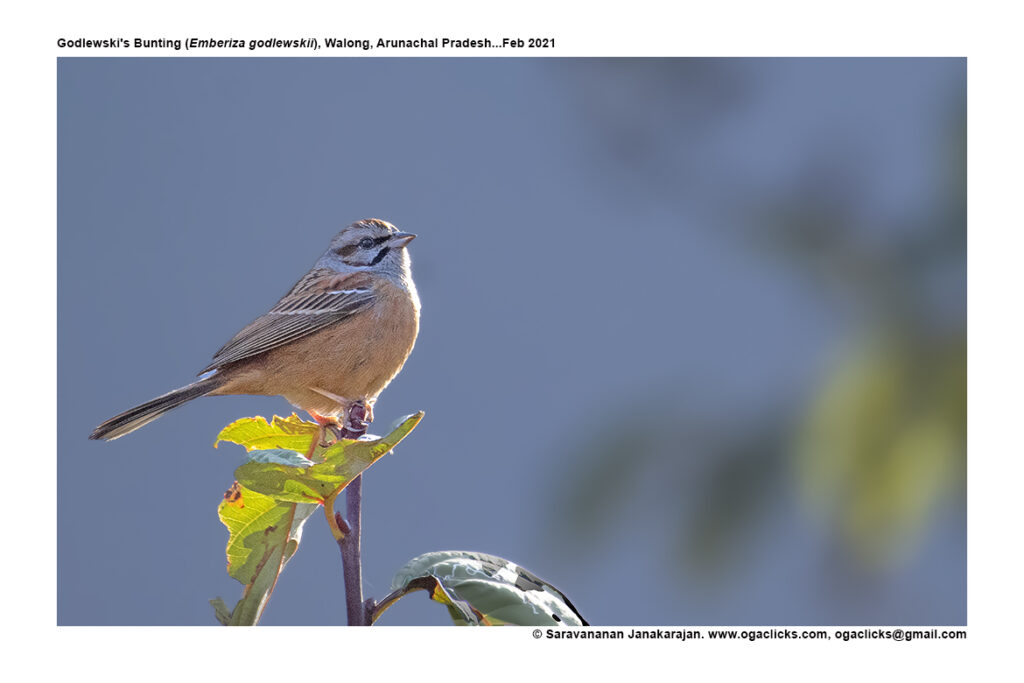
Godlewski’s Bunting Emberiza godlewskii yunnanensis
Etymology:
- Emberiza : Old German name Embritz for a bunting
- Godlewskii : Wiktor Witold (also known as Ignacy) Godlewski (1831-1900) Polish farmer
- Yunnanensis : From Yunnan Province, China.
Distribution in India: Winter visitor in extreme North East Arunachal Pradesh ( Walong )
Description: Size of 17 cm; Wt. of 14–23 g. It is a large bunting. The male of nominate race has grey head, throat and breast, broad chestnut lateral crownstripe and posterior eyestripe, black loral stripe and moustachial stripe, and chestnut border of rear and lower ear-coverts. The upperparts are pale rufous with broad black streaks, rump and uppertail-coverts are unstreaked reddish-brown, bright chestnut scapulars contrasting with mantle. The upperwing is blackish, flight-feathers have narrow pale edges, tertials with pale rufous outer edges and narrower inner edges, median and greater coverts are tipped white forming two wingbars. The tail is blackish, central feather pair has thin rufous edges, outer pairs have white on one or both webs, amount of white increasing outwards. The underparts below breast are pale ochraceous. The fresh (after moult), plumage is duller-looking and slightly paler; iris is dark brown; upper mandible is blackish, lower mandible is bluish-grey with blackish tip; legs are pinkish-brown. The female is like male, slightly duller and with darker crown stripes. The juvenile has buff to rufous-buff head streaked dark, dark eyestripe, brownish ear-coverts bordered dark below, upperparts are buffish with prominent dark brown streaking, somewhat more rufous rump also streaked, upperwing-coverts tipped buffish, underparts are buffish, breast has dark streaking, flanks are less boldly streaked, bare parts much as for adult. The race yunnanensis is darkest, with the most saturated plumage tones.
Habitat: It is found in bushy and rocky slopes in mountains and hills, also in ravines, often near forest. In non-breeding season found in lowland areas, farmland and cultivated fields.
Food Habits: It eats in non- breeding season seeds of grasses. During breeding period it eats invertebrates. It forages mostly on ground. It is found in non-breeding season usually in small flocks, mixed with other Buntings and Rosefinches
Breeding Habits: They breed May-June. The nest is cup-shaped, loose structure made from withered grasses and plant stems, lined with fine rootlets and hair, placed on ground under overhanging rock, or sheltered by stones. They lay a clutch of 3–5 eggs. The incubation period is 13–14 days. The nestling period is 10–14 days.